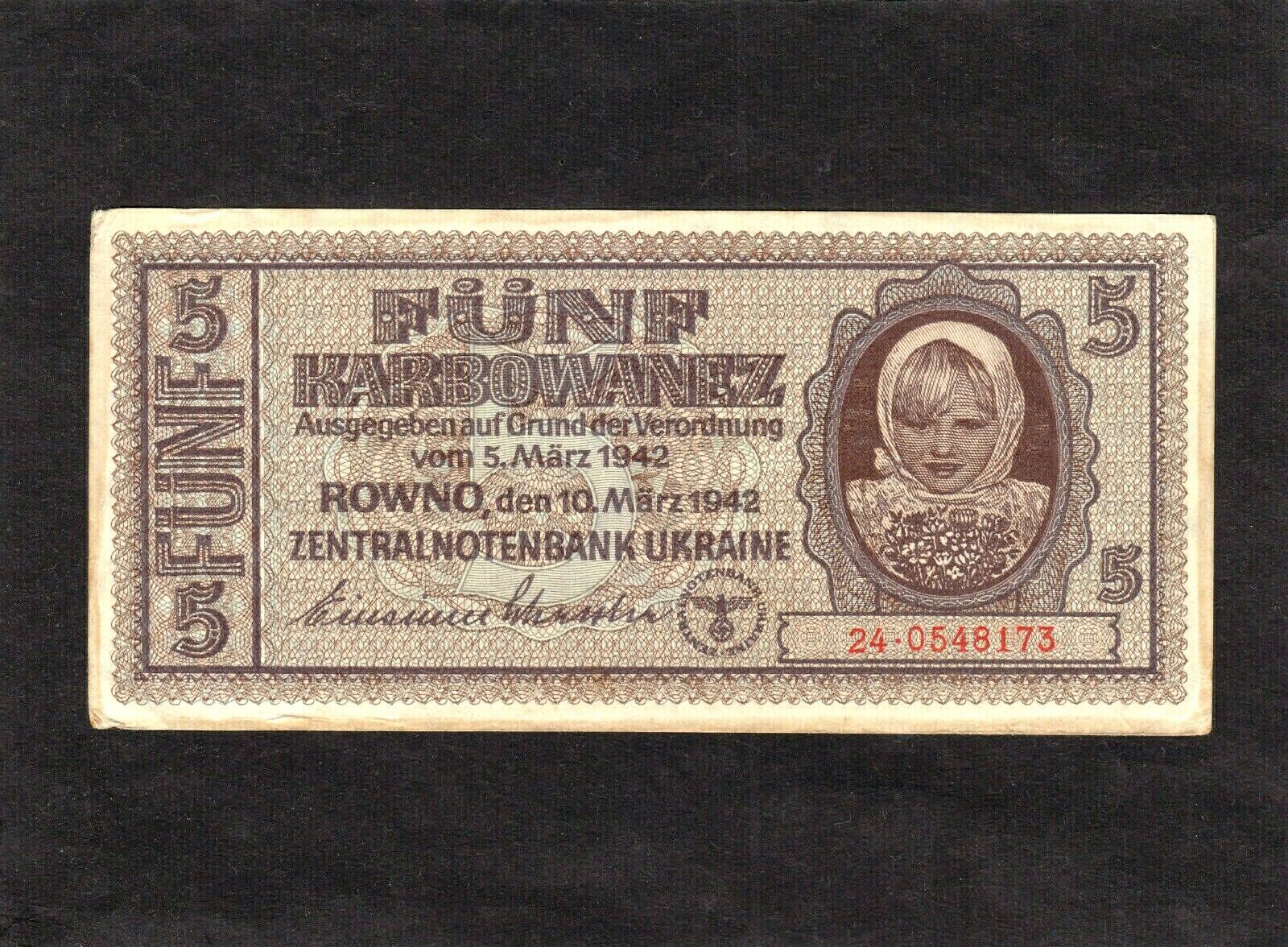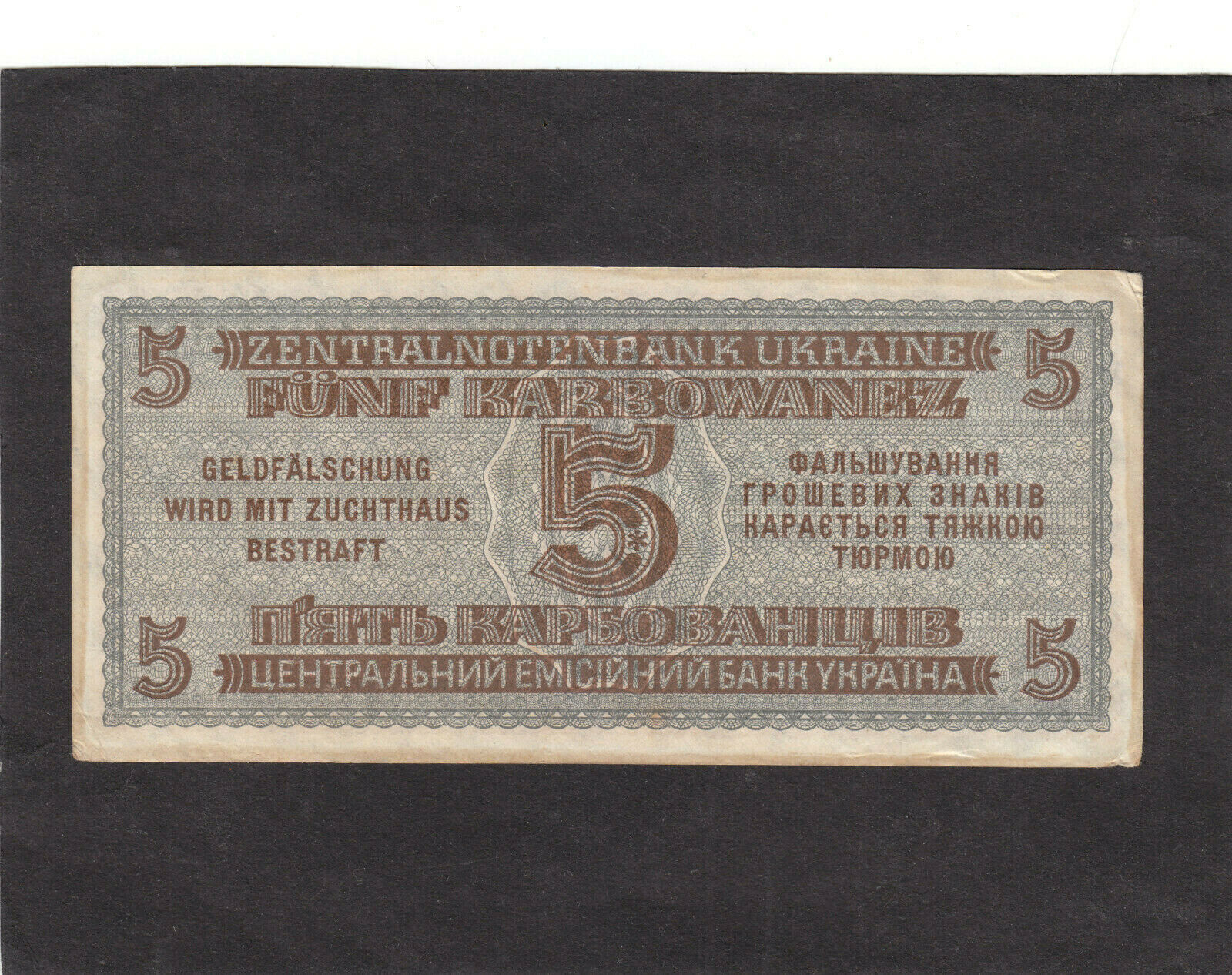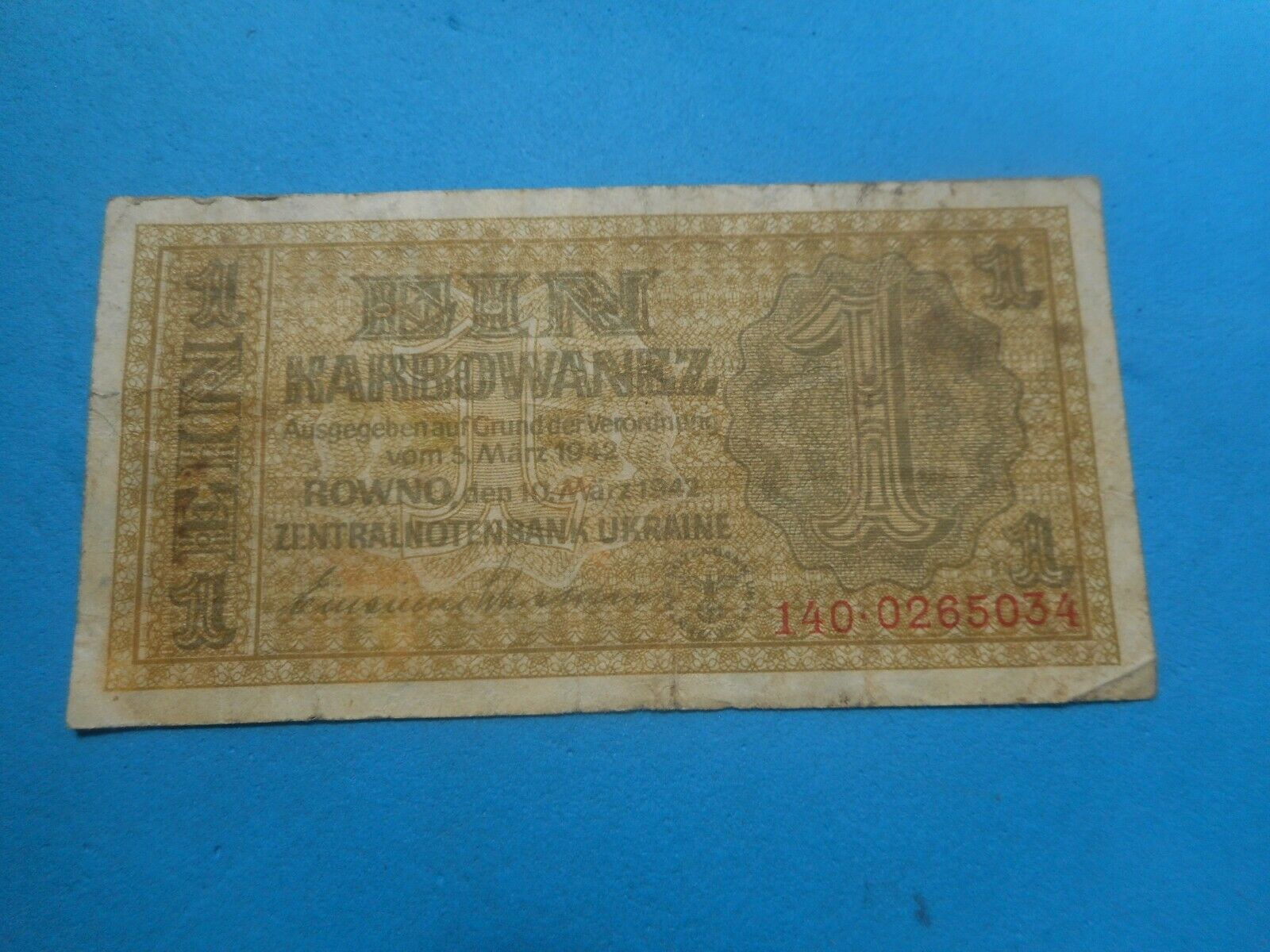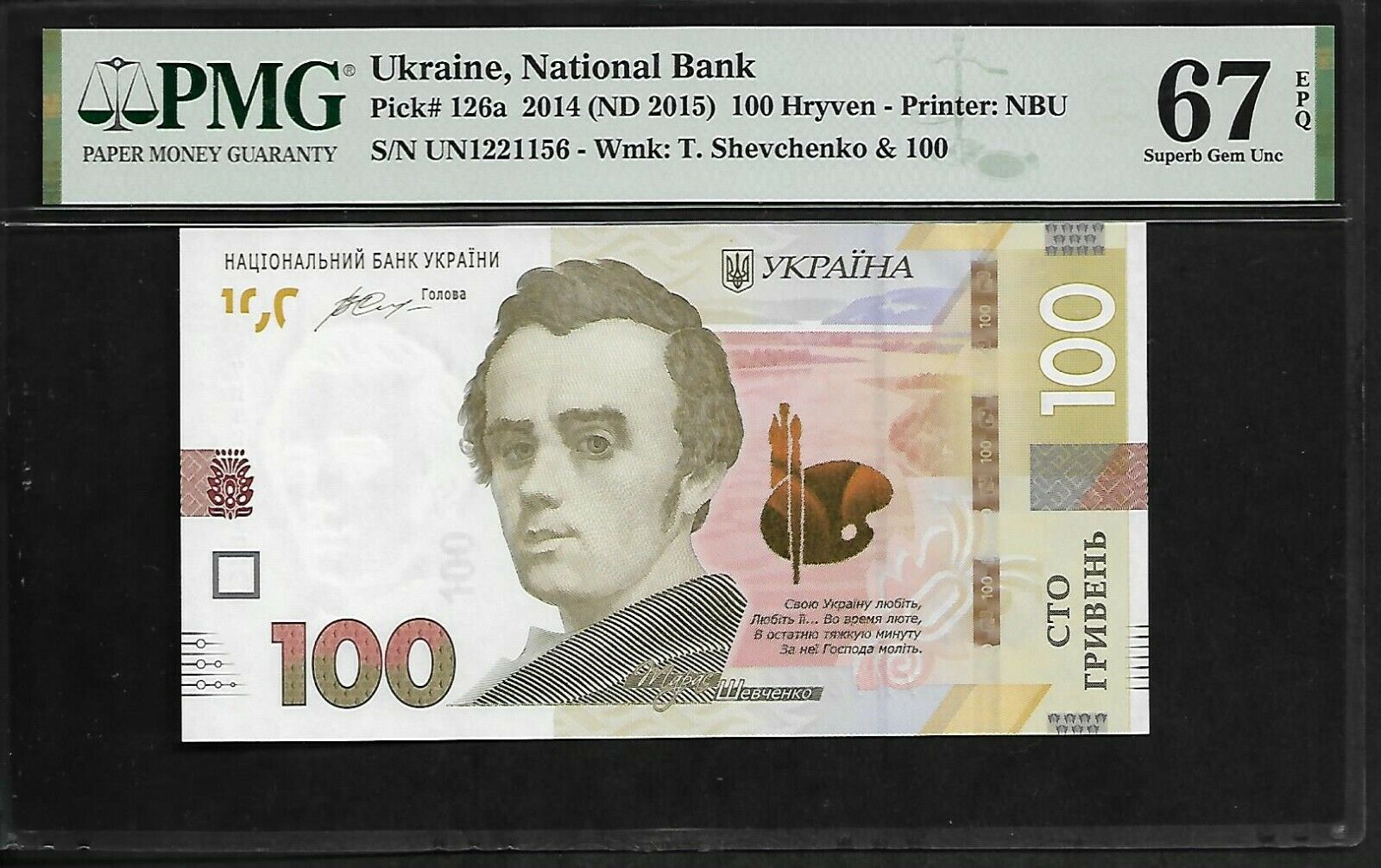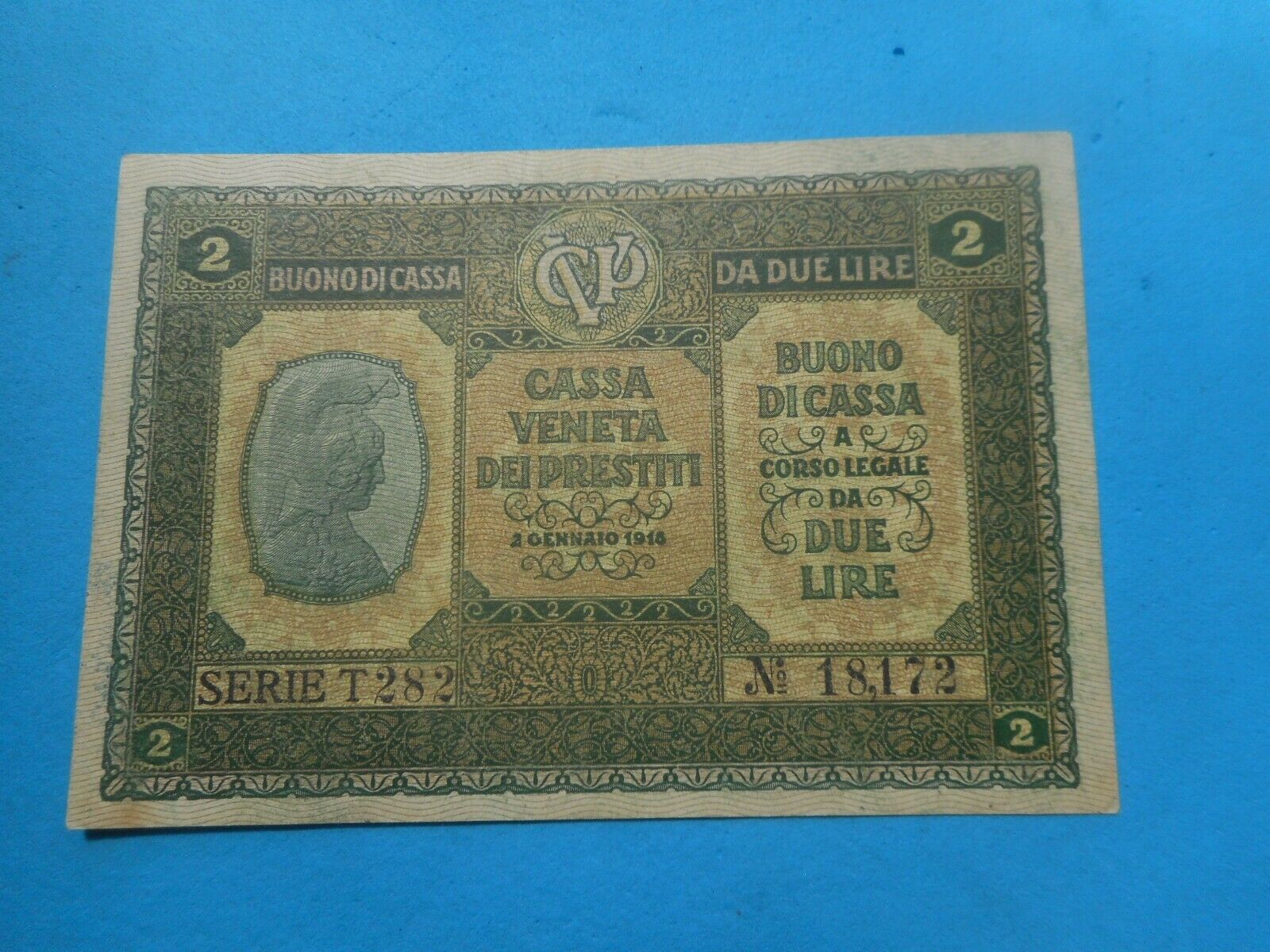-40%
Ukraine 5 Karbowanez 1942 P-51 EF
$ 17.21
- Description
- Size Guide
Description
One banknote of Ukraine 5 Karbowanez 1942 P-51.Condition (opinion): Extremely Fine (EF) ,see scan. .Size:12,8cm/5,9cm (small)
----------------------------------------------------------------------------
Postage, including packing material, handling fees : Europe: USD 4.10 / USA $ 4.90. Rest of the World: USD 5.70
Postage, including packing material, handling fees : Europe: USD 4.40 / USA $ 5.30. Rest of the World: USD 6.10
FREE of postage for any other items.
Only one shipping charge per shipment (the highest one) no matter how many items you buy (combined shipping).
Payment :
PayPal only.
Pay instantly with your debit or credit card through PayPal.
All major Credit Cards are accepted by Paypal, even if you don't have a Paypal account.
-----------------------------------------------------------------------------
Guaranteed genuine -
One
month
return
policy
(retail sales) .
Returns accepted with no questions.
Customers are invited to combine purchases to save postage.
Full refund policy ,including shipping cost,guaranteed in case of lost or theft after the completion of the complaint with Spanish Correos for the registered letters (purchases above $ 40.00).
As we have (or could have) more than one identical item ,the serial number may differ from those shown in the picture which is for reference only.
For purchases above .00 we send the orders registered with tracking number without extra charge, for purchases below .00 we ship as regular letters at the buyer's risk.
For purchases below $ 40,00 who want to register your letter with tracking number, please add an extra for : Europe .00 , U.S. .00 ,Rest of the word .00
For some destinations and purchases below .00 customers may be requested for this extra shipping payment in order to register the shipment with tracking number.
If for any reason, your item did not arrive yet, or you are not 100% satisfied with the item you have received, please do not hesitate to contact , I will do all it takes to provide the best service.
Banknote Grading
UNC
AU
EF
VF
F
VG
G
Fair
Poor
Uncirculated
About Uncirculated
Extremely Fine
Very Fine
Fine
Very Good
Good
Fair
Poor
Edges
no counting marks
light counting folds OR...
light counting folds
corners are not fully rounded
much handling on edges
rounded edges
Folds
no folds
...OR one light fold through center
max. three light folds or one strong crease
several horizontal and vertical folds
many folds and creases
Paper
color
paper is clean with bright colors
paper may have minimal dirt or some color smudging, but still crisp
paper is not excessively dirty, but may have some softness
paper may be dirty, discolored or stained
very dirty, discolored and with some writing
very dirty, discolorated, with writing and some obscured portions
very dirty, discolored, with writing and obscured portions
Tears
no tears
no tears into the border
minor tears in the border, but out of design
tears into the design
Holes
no holes
no center hole, but staple hole usual
center hole and staple hole
Integrity
no pieces missing
no large pieces missing
piece missing
piece missing or tape holding pieces together
-------------------------------------------------------
German Occupation of Ukraine during World War II – The Occupation Banknotes
In a matter of months after Adolf Hitler invaded the Soviet Union with Operation Barbarossa on June 22, 1941, Ukraine came under the control of Nazi Germany.
Hitler and the Nazi Party considered the citizens of Ukraine as sub-human along with Russians and Jews.
Reichskommissar Erich Koch, a fanatical Nazi, was appointed by Hitler as the civilian administrator of occupied Ukraine.
As head of the
Reichskommissariat Ukraine
,
Reich Commissar Koch introduced draconian measures in the Ukraine with forced labor, primitive accommodations and minimal rations for survival.
He was known to have said “the lowliest German worker is a thousand times more valuable” than the entire population of the Ukraine.
When Nazi Germany first occupied the Ukraine, they presented themselves as the saviors of the Ukranians from the Soviet Union. The German propaganda machine promoted Hitler as the Liberator of the Ukraine.
At the start of World War II, Koch was the
Reichsverteidigungskommissar
(
Reich Defense Commissioner) for East Prussia.
After the successful invasion of Poland he was transferred to Danzig-West Prussia where he studied in depth the ethnic composition of the occupied territories to segregated Jews and other undesirables of the Third Reich.
The total number of civilians killed in the conflict during the German occupation of the Ukraine from 1941 to 1944 is estimated at seven million.
The
einsatzgruppen
– Heinrich Himmler’s mobile death squads – exterminated over a million innocent Jewish men, women and children with their bullets.
The explicit orders for the
einsatzgruppen
were to follow the Wehrmacht into the Soviet Union and eliminate any “partisans” left behind, which included Jews, Red Army soldiers, communist officials and other undesirables and enemies of the Third Reich.
The Waffen SS also contributed to the casualty counts. During the German conquest of Ukraine, the most infamous slaughter of innocents by the
einsatzgruppen
was at a ravine called Babi Yar, outside the city of Kiev. On September 29 and 30 of 1941, over 34,000 women, children and old men were marched naked to the ravine and shot. This is the worst mass murder by shooting.
It was followed by the systematic mass murder by poison gas with the establishment of the Nazi death camps, the largest of which was Auschwitz.
he occupation banknotes were all issued in Rowno (Rovno) on March 10, 1942.
In accordance with the Riga Peace Treaty of 1921, Rowno became a part of Poland.
After the Molotov-Ribbentrop Pact of 1939 and the subsequent partition of Poland, Rowno was occupied by the Soviet Union.
On June 28, 1941 Rowno was captured by Nazi Germany and served as the administrative center of the
Reichskommissariat Ukraine
.
The population of Rowno was 50% Jewish.
In Rovno and the surrounding region, the
einsatzgruppen
slaughtered over 100,000 innocent civilians, including women and children.
These occupation banknotes were issued by the Zentral Notenbank Ukraine (Ukranian Central Bank) is Rowno for circulation in the territory of the
Reichslommissariat Ukraine
. The districts included
Dnipropetrovs, Kiev, Nykolaiv, Zhytomyr and Volhynia-Podolia. The denomination of the banknotes is in Karbowanez (Karbovanetz). They were issued in denominations of 1 Karbowanez (P-49), 2 Karbowanez (P-50), 5 Karbowanez (P-51), 10 Karbowanez (P-52), 20 Karbowanez (P-53), 50 Karbowanez (P-54), 100 Karbowanez (P-55), 200 Karbowanez (P-56) and 500 Karbowanez (P-57). The 500 Karbowanez banknote is the largest and measures 18.6cm x 10.4cm.
After the Battle of Rowno, the city was liberated by the Red Army on February 2, 1944 and remained part of Soviet Ukraine after the war.
At the end of the war, the Soviet Union demanded Erich Koch’s extradition. However, the British did not relent and instead handed him over to the Polish authorities on January 14, 1950. His trial did not begin until 1958 where he was tried for war crimes related to the extermination of 400,000 Poles. Found guilty he was sentenced to death on March 9, 1959 by the district court in Warsaw. However his sentence was commuted to life in prison without parole. He died in prison on November 12, 1986 at the age of 90.
